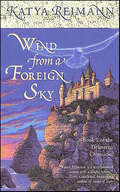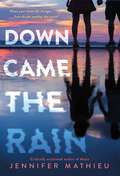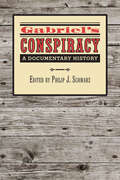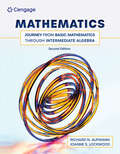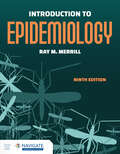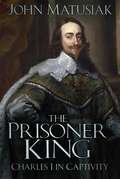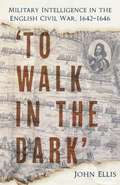- Table View
- List View
Red Cloud's Revenge: Showdown on the Northern Plains, 1867 (The Plainsmen Series)
by Terry C. JohnstonSeven month of small reprisals since the Fetterman massacre had passed. Sergeant Seamus Donegan of the Army of the West had witnessed proud leaders--both Indian and White--steel themselves for the withering clashes to come. And on two consecutive summer days, battle erupted--drowning the Dakota Territory in a damburst of bloodshed: the Hay Field Fight and Wagon Box Fight of 1867.
Zen 24/7: All Zen, All the Time
by Philip Toshio Sudo“Those who say they have no time for meditation will relish this humorous but perceptive book.” —Publishers WeeklyEnlightenment is within reach—twenty-four hours a day, seven days a week.If you're searching for revelation and contentment, look no further than a handshake, a cup of coffee—even your laundry pile. The most mundane details of life contain zen's profound truths, if you're of the mind to look for them.By awakening to and embracing the zen in your life, you'll listen, watch, eat, work, laugh, sleep, and breathe your way to truth—every moment of every day.“With an ease that comes from spiritual maturity, Sudo delivers one marvel after another in this astute reading of zen truths residing in work, exercise, eating, laughter, and sleep . . . Sudo makes the spiritual practices of attention, being present, gratitude, and wonder come to life on these pages. You'll never be the same after reading Zen 24/seven.” —Spirituality & Practice“Sudo explains how to turn the most ho-hum activities into opportunities for transcendence.” —Fitness magazine
Ad Nauseam: A Survivor's Guide to American Consumer Culture
by Carrie McLaren and Jason TorchinskyWith the style and irreverence of Vice magazine and the critique of the corporatocracy that made Naomi Klein's No Logo a global hit, the cult magazine Stay Free!—long considered the Adbusters of the United States—is finally offering a compendium of new and previously published material on the impact of consumer culture on our lives. The book questions, in the broadest sense, what happens to human beings when their brains are constantly assaulted by advertising and corporate messages. Most people assert that advertising is easily ignored and doesn't have any effect on them or their decision making, but Ad Nauseam shows that consumer pop culture does take its toll.In an engaging, accessible, and graphically appealing style, Carrie McLaren and Jason Torchinsky (as well as contributors such as David Cross, The Onion's Joe Garden, The New York Times's Julie Scelfo, and others) discuss everything from why the TV program CSI affects jury selection, to the methods by which market researchers stalk shoppers, to how advertising strategy is like dog training. The result is an entertaining and eye-opening account of the many ways consumer culture continues to pervade and transform American life.
Wind from a Foreign Sky (The Tielmaran Chronicles)
by Katya ReimannGaultry enjoyed the simple, pastoral life of a hedge witch, where her most daunting task was to travel to the nearby village to purchase supplies. But her peaceful life is shattered when it becomes entangled in an ancient prophecy--a prophecy which names her and her headstrong twin sister, Mervion, as their nation's salvation...or its destruction.At the Publisher's request, this title is being sold without Digital Rights Management Software (DRM) applied.
The Sanctuary for Lent 2025
by Justin LaRosaA Convenient and Affordable Lenten devotional for the entire church.The Sanctuary for Lent 2025 contains brief readings for each day in Lent, from Ash Wednesday through Easter Day, including a suggested Scripture, a short devotion, and a short prayer or practice—all based on the Revised Common Lectionary. This annual favorite helps readers faithfully journey through Lent as they prepare to experience the joy of the Resurrection. Along with being a great congregational resource, it is an excellent gift for family, friends, and those your congregation connects with through outreach.
The Shell Seekers: A Play (Coronet Bks. #Vol. 1)
by Rosamunde PilcherRosamunde Pilcher's The Shell Seekers is "a huge warm saga...A deeply satisfying story written with love and confidence" (Maeve Binchy in The New York Times Book Review).The Shell Seekers was adapted twice to film (1989 and 2006).An instant bestseller when it was first published, The Shell Seekers is an enduring classic which has touched the hearts of millions of readers worldwide. A novel of connection, it is the story of one family—mothers and daughters, husbands and lovers—and of the passions and heartbreak that have held them together for three generations. This magical novel—the kind of reading experience that comes along only once in a long while—is the perfect read, whether you are returning to it again, or opening the cover for the first time.At the end of a long and useful life, Penelope Keeling's prized possession is The Shell Seekers, painted by her father, and symbolizing her unconventional life, from bohemian childhood to wartime romance. When her grown children learn their grandfather's work is now worth a fortune, each has an idea as to what Penelope should do. But as she recalls the passions, tragedies, and secrets of her life, she knows there is only one answer...and it lies in her heart.
Down Came the Rain
by Jennifer MathieuFrom Jennifer Mathieu, the acclaimed author of Moxie - now a Netflix film - and Bad Girls Never Say Die, comes a bold novel about two young activists who find love and themselves as they tackle the threat of climate change. After Eliza’s home in Houston is destroyed by Hurricane Harvey, she is forced to transfer to Southwest High School. Traumatized by the floods and anxious in her new surroundings, Eliza throws herself into environmental activism, even if it's against the wishes of her Big Oil dad.But when she meets Javi – a boy who has experienced climate-related trauma of his own – she's finally able to connect with someone over the devastating mental effects of ecological disaster. Filled with nuanced themes of mental health, classism, and eco-anxiety, Down Came the Rain is a riveting and moving tale of friendship, first love, and what it means to grow up in an ever-changing world.
It. Goes. So. Fast.: The Year of No Do-Overs
by Mary Louise KellyAn Instant New York Times Bestseller“This voice-driven, relatable, heartfelt and emotional story will make any parent tear up.”—Good Morning America, “15 Delightful Books Perfect for Spring Reading”Operating Instructions meets Glennon Doyle in this new book by famed NPR reporter Mary Louise Kelly that is destined to become a classic—about the year before her son goes to college—and the joys, losses and surprises that happen along the way.The time for do-overs is over.Ever since she became a parent, Mary Louise Kelly has said “next year.” Next year will be the year she makes it to her son James’s soccer games (which are on weekdays at 4 p.m., right when she is on the air on NPR’s All Things Considered, talking to millions of listeners). Drive carpool for her son Alexander? Not if she wants to do that story about Ukraine and interview the secretary of state. Like millions of parents who wrestle with raising children while pursuing a career, she has never been cavalier about these decisions. The bargain she has always made with herself is this: this time I’ll get on the plane, and next year I’ll find a way to be there for the mom stuff.Well, James and Alexander are now seventeen and fifteen, and a realization has overtaken Mary Louise: her older son will be leaving soon for college. There used to be years to make good on her promises; now, there are months, weeks, minutes. And with the devastating death of her beloved father, Mary Louise is facing act three of her life head-on. Mary Louise is coming to grips with the reality every parent faces. Childhood has a definite expiration date. You have only so many years with your kids before they leave your house to build their own lives. It’s what every parent is supposed to want, what they raise their children to do. But it is bittersweet. Mary Louise is also dealing with the realities of having aging parents. This pivotal time brings with it the enormous questions of what you did right and what you did wrong. This chronicle of her eldest child’s final year at home, of losing her father, as well as other curve balls thrown at her, is not a definitive answer―not for herself and certainly not for any other parent. But her questions, her issues, will resonate with every parent. And, yes, especially with mothers, who are judged more harshly by society and, more important, judge themselves more harshly. What would she do if she had to decide all over again? Mary Louise’s thoughts as she faces the coming year will speak to anyone who has ever cared about a child or a parent. It. Goes. So. Fast. is honest, funny, poignant, revelatory, and immensely relatable.
Careless People: A Cautionary Tale of Power, Greed, and Lost Idealism
by Sarah Wynn-Williams#1 New York Times Bestseller“Careless People is darkly funny and genuinely shocking...Not only does [Sarah Wynn-Williams] have the storytelling chops to unspool a gripping narrative; she also delivers the goods." -Jennifer Szalai, The New York Times “When one of the world’s most powerful media companies tries to snuff out a book — amid other alarming attacks on free speech in America like this — it’s time to pull out all the stops.” –Ron Charles, The Washington Post An explosive memoir charting one woman’s career at the heart of one of the most influential companies on the planet, Careless People gives you a front-row seat to Facebook, the decisions that have shaped world events in recent decades, and the people who made them. From trips on private jets and encounters with world leaders to shocking accounts of misogyny and double standards behind the scenes, this searing memoir exposes both the personal and the political fallout when unfettered power and a rotten company culture take hold. In a gripping and often absurd narrative where a few people carelessly hold the world in their hands, this eye-opening memoir reveals what really goes on among the global elite. Sarah Wynn-Williams tells the wrenching but fun story of Facebook, mapping its rise from stumbling encounters with juntas to Mark Zuckerberg’s reaction when he learned of Facebook’s role in Trump’s election. She experiences the challenges and humiliations of working motherhood within a pressure cooker of a workplace, all while Sheryl Sandberg urges her and others to “lean in.” Careless People is a deeply personal account of why and how things have gone so horribly wrong in the past decade—told in a sharp, candid, and utterly disarming voice. A deep, unflinching look at the role that social media has assumed in our lives, Careless People reveals the truth about the leaders of Facebook: how the more power they grasp, the less responsible they become and the consequences this has for all of us.
The Girl by the Bridge: A Detective Konrad Novel (Detective Konrad)
by Arnaldur Indridason18 million copies sold worldwide!An elderly couple are worried about their granddaughter. They know she's been smuggling drugs, and now she's gone missing. Looking for help, they turn to Konrad, a former policeman whose reputation precedes him.Always absent-minded, he constantly ruminates on the fate of his father, who was stabbed to death decades ago. But digging into the past reveals much more than anyone set out to discover, and a little girl who drowned in the Reykjavik city pond unexpectedly captures everyone's attention.A brilliant, chilling tale of broken dreams and children who have nowhere to turn.
Tea You at the Altar (Tomes & Tea)
by Rebecca ThorneThe Princess Bride meets Bookshops and Bonedust in the third book of the Tomes & Tea series, where our favorite lesbian pirates must navigate the ultimate maelstrom--their own wedding!Kianthe and Reyna are ready to finally walk down the aisle--in just seven days, their wedding of a wifetime will be a reality. There's loads to do--but like all best laid plans, everything seems to be going awry.Between their baby dragons causing mayhem in Tawney, Kianthe's uptight parents inviting themselves to the wedding, and Reyna becoming embroiled in a secret plot to overthrow Queen Tilaine, the world seems against them--how are they going to live long enough to say "I do"?At the Publisher's request, this title is being sold without Digital Rights Management Software (DRM) applied.
Gabriel's Conspiracy: A Documentary History (Carter G. Woodson Institute Series)
by Philip J. SchwarzThe plans for a large slave rebellion in the Richmond area in 1800, orchestrated by a literate enslaved blacksmith named Gabriel, leaked out before they could be executed, and he and twenty-five other enslaved people were hanged. In reaction to the plot, the Virginia and other legislatures passed restrictions on free blacks, as well as on the education, movement, and hiring out of the enslaved. Although Gabriel's conspiracy is well known among historians, documents relating to it have remained relatively inaccessible. In Gabriel’s Conspiracy, Philip J. Schwarz offers a valuable selection of the documents discovered to date. Together with Michael Nicholls’s complementary book, Whispers of Rebellion (Virginia), these volumes offer a complete account of the quashed slave conspiracy.
Clinical and Employability Skills for Health Care Professions
by Linda Stanhope Kimberly Turnbull Debra BorchertClinical and Employability Skills for Healthcare Professions is a comprehensive and versatile resource for students embarking on their clinical and internship experiences. This program can be used as a standalone course or supplementary material for other courses in the clinical program of study. The three units of this program prepare and guide students and instructors through clinical experiences to ensure students master the employability skills needed to succeed in the workplace.
Diesel Engine Technology
by James P. Mack Jason A. Daniels Mark A. DeHart J. Gene Choe Kevin D. ViethDiesel Engine Technology covers the design, construction, operation, diagnosis, service, and repair of both mobile and stationary diesel engines. Content relates to on- and off-road vehicles, as well as marine, agricultural, and industrial applications. This text is a valuable resource for anyone involved in the service and repair of diesel engines, as well as those preparing for ASE Medium/Heavy Truck Test T2—Diesel Engines, Test T6—Electrical/Electronic Systems, and Test T8—Preventive Maintenance Inspection.
Mathematics: Journey from Basic Mathematics through Intermediate Algebra
by Richard N. Aufmann Joanne S. LockwoodAufmann/Lockwood's MATHEMATICS: JOURNEY FROM BASIC MATHEMATICS THROUGH INTERMEDIATE ALGEBRA, 2nd Edition, and WebAssign, delivers learning objectives organized by section in 22 modules spanning the entire developmental mathematics sequence -- basic mathematics, prealgebra, introductory algebra, intermediate algebra and an introduction to trigonometry -- in one, ready-to-go, flexible resource. Enrich the teaching and learning experience with the superior content within the powerful digital platform of WebAssign that helps your students master the course concepts. No matter your syllabus needs or course environment, you have everything needed to get started with minimal setup time. Tailor your course with a wide range of assignment settings, the ability to add questions and content, analytics at the individual and course level and student/teacher communication tools. The learning resources for students include the eTextbook, multiple opportunities to practice skills and concepts with the Guided Workbook and AIM for Success Practice Sheets, videos with practice questions and the online learning platform, WebAssign -- all designed to accommodate the student’s unique learning path.
Introduction to Epidemiology
by Ray M. MerrillIntroduction to Epidemiology is a comprehensive, reader-friendly introduction to this exciting field. Designed for students with minimal training in the biomedical sciences and statistics, this full-color text emphasizes the application of the basic principles of epidemiology according to person, place, and time factors in order to solve current, often unexpected, and serious public health problems. Students will learn how to identify and describe public health problems, formulate research hypotheses, select appropriate research designs, manage and analyze epidemiologic data, interpret and apply results in preventing and controlling disease and health-related events. With real-world examples in the form of case studies and news files in each chapter, Introduction to Epidemiology is an accessible and effective approach to learning epidemiology. Carefully revised throughout, the Ninth Edition offers: New chapters on Epidemiology Study Plan (5) and on Social Epidemiology (13)
The Prisoner King: Charles I in Captivity
by John MatusiakMuch has been written about Charles I’s reign, about the brutal civil war into which his pursuit of unfettered power plunged the realm, and about the Commonwealth regime that followed his defeat and execution. His reign is one that shaped the future of the British monarch, and his legacy still remains with us today. After more than half a century of comparative neglect, The Prisoner King provides a new and much needed re-examination of the crucial period encompassing Charles I’s captivity after his surrender to the Scots at Newark in May 1646. Not only were the subsequent months before his trial a time when the human dimension of the king’s predicament assumed unparalleled intensity, they were also a critical watershed when the entire nation stood at the most fateful of crossroads. For Charles himself, as subterfuge, espionage and assassination rumours escalated on all fronts, escape attempts foundered, and tensions with his absent wife mounted agonisingly, the test was supreme. Yet, in a painful passage involving both stubborn impenitence and uncommon fortitude in the face of ‘barbarous usage’ by his captors, the ‘Man of Blood’ would ultimately come to merit his unique place in history as England’s ‘martyr king’.
The English Civil War: A Historical Companion
by Martyn BennettThis comprehensive work of reference gives full consideration to the whole conflict, including its Welsh, Scottish, and Irish dimensions. Entries include biographies of the key personalities, key events, battles, military institutions of the conflict, the run-up to the conflict, the wars themselves, and the aftermath. From the St. Giles riots in Edinburgh in 1637 to the restoration of Charles II on May 8, 1660, this book provides all the facts and figures that an armchair general would ever need.
'To Walk in the Dark': Military Intelligence in the English Civil War, 1642-1646
by John EllisDuring the bloody years of the First English Civil War, as the battles of Edgehill, Newbury and Naseby raged, another war was being fought. Its combatants fought with cunning and deceit, a hidden conflict that nevertheless would steer the course of history. The story of the spies and intelligence-gatherers of the Roundheads and Royalists is one that sheds new light on the birth of the Commonwealth. In 'To Walk in the Dark', intelligence specialist John Ellis presents the first comprehensive analysis of the First English Civil War intelligence services. He details the methods of the Roundhead spies who provided their army commanders with a constant flow of information about the movements of the King's armies, describes the earliest use of code-breaking and mail interception and shows how the Cavalier intelligence forces were overcome. He also reveals the intelligence personnel themselves: the shadowy spymasters, agents and femmes fatales. The descriptions of how intelligence information was used in the main Civil War battles are particularly fascinating and show - for the first time - how intelligence information played a decisive role in determining the outcome of the Civil War itself.
Amplify Core Knowledge Language Arts, Grade 4, Unit 2, Empires in the Middle Ages, Part 2, Activity Book
by Amplify EducationNIMAC-sourced textbook
To Love and Be Loved: A Personal Portrait of Mother Teresa
by Jim ToweyFrom a trusted advisor and devoted friend of Mother Teresa comes a &“powerful&” (The Washington Free Beacon) firsthand account of the miraculous woman behind the saint and a book that is &“rich in reflection on contemporary sanctity&” (George Weigel).Mother Teresa was one of the most admired women of the 20th century, and her memory continues to inspire charitable work around the world. She believed the greatest need of a human being is to love and be loved. In 1948, she founded the Missionaries of Charity to work directly with the very poorest of Calcutta. From the efforts of one woman entering the slums of Entally, the Missionaries of Charity grew into an organization operating soup kitchens, health clinics, hospices, and shelters in 139 countries, at no cost to any government or to those who served. In 2016, she became Saint Teresa of Calcutta. Author Jim Towey had been a high-flying Congressional staffer and lawyer in the 1980s until a brief meeting with Mother Teresa illuminated the emptiness of his life. He began volunteering at one of her soup kitchens and using his legal skills and political connections to help the Missionaries of Charity. When Mother Teresa suggested he take up shifts at her AIDS hospice, Towey realized he was all in. Soon, he gave up his job and possessions and became a full-time volunteer for Mother Teresa. He traveled with her frequently, arranged her meetings with politicians, and handled many of her legal affairs. To Love and Be Loved is an &“inspiring and joyful&” (Kirkus Reviews) firsthand account of Mother Teresa&’s last years, and the first book ever to detail her dealings with worldly matters. We see her gracefully navigate the opportunities and challenges to leadership, the perils of celebrity, and the humiliations and triumphs of aging. We also catch her indulging in chocolate ice cream, making jokes about mini-skirts, and telling the President of the United States he&’s wrong. Above all, we see her extraordinary devotion to God and to the very poorest of His children. Mother Teresa taught Towey to be more prayerful, less selfish, more humble, less worldly, move in love with God, and less in love with himself. Her lessons are here for all to share.
I've Got My Eyes on You: A Novel
by Mary Higgins ClarkThe newest thriller and instant #1 New York Times bestseller from Queen of Suspense Mary Higgins Clark shows us just how far a family and a town will go to protect their own in the wake of tragedy.After a party when her parents are away, eighteen-year-old Kerry Dowling is found fully dressed at the bottom of the family pool. The immediate suspect is her boyfriend, who had a bitter argument with her at the party. Then there is a twenty-year-old neighbor who was angry because she didn&’t invite him to the party. Or is there another suspect who has not yet been seen on the radar? Kerry&’s older sister Aline, a twenty-eight-year-old guidance counselor, is determined to assist the prosecutor&’s office in learning the truth. She does not realize that now she is putting her own life in danger… From #1 New York Times bestselling author and the &“Queen of Suspense&” comes a thrilling investigation asking what we truly know about those we trust, and the secrets lying in even the most idyllic of neighborhoods.
Making It So: A Memoir
by Patrick StewartTHE NEW YORK TIMES AND USA TODAY BESTSELLER The renowned and bestselling memoir—written with &“insight, truth, and passion&” (Sir Ian McKellen)—from iconic, beloved actor and living legend Sir Patrick Stewart.From his acclaimed stage triumphs to his legendary onscreen work, Sir Patrick Stewart has captivated audiences around the world and across multiple generations in a career spanning six decades with his indelible command of stage and screen. No other British working actor enjoys such career variety, universal respect, and unending popularity, as witnessed through his seminal roles—whether as Captain Jean-Luc Picard of Star Trek fame, Professor Charles Xavier of Marvel's X-Men hit movie franchise, his more than forty years as part of the Royal Shakespeare Company, his unforgettable one-man show adapted from Charles Dickens&’s A Christmas Carol, or his comedic work in American Dad!, Ted, Extras, and Blunt Talk, among many others. Now, he presents his stunning memoir, a revealing portrait of a driven artist whose astonishing life—from his humble beginnings in Yorkshire, England, to the heights of Hollywood and worldwide acclaim—proves a story as exuberant, definitive, and enduring as the author himself.
Are You There, Vodka? It's Me, Chelsea
by Chelsea HandlerWelcome to Chelsea Handler's world—a place where absurdity reigns supreme and a quick wit is the best line of defense.When Chelsea Handler needs to get a few things off her chest, she appeals to a higher power—vodka. Seems reasonable, when considering that she discovered her boyfriend was having an affair with a Peekapoo and she had to pretend to be honeymooning with her father in order to upgrade to first class. In this highly entertaining, deliciously skewed collection, Chelsea mines her past for stories about her family, relationships, and career that are at once singular and ridiculous. Whether she’s convincing her third-grade class that she has been chosen to play Goldie Hawn’s daughter in the sequel to Private Benjamin, deciding to be more egalitarian by dating a redhead, or looking out for a foulmouthed, rum-swilling little person who looks just like her...only smaller, Chelsea has a knack for getting herself into the most outrageous situations. Are You There, Vodka? It’s Me, Chelsea showcases the candor and irresistible turns of phrase that have made her one of the freshest voices in comedy today.



